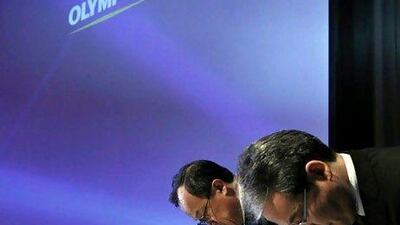The famous quote "Everything rises and falls on leadership" could not be more accurate.
When things are going well, rest assured that there is a leader making this happen. And, unfortunately, when something is amiss, you can be sure that there is a leadership challenge.
While this concept is widely accepted, it can still be contentious, as it indicts leaders even for what is outside of their control - such as conditions in the market. But even this does not entirely absolve leaders, as they are still responsible for how they respond.
Once again, at the root of business, everything rises and falls on leadership.
I was with a group of senior managers from a prominent local company who were sharing how much better things had become now that their executive leader was gone. Puzzled by this, I asked whether they had a replacement. Someone quickly replied that they did not, "but getting rid of the old leader changed the way the whole team works. He was toxic."
This example highlights the negative side of running a business falling with the leader, as their previous performance was in the dumps.
Several months ago, the Financial Times reported that Olympus's management was "rotten to the core". This story touched on a dreaded extreme: leadership was accused of breaking Japanese law and hiding investment losses. Again, a clear example of how leaders can contaminate those around them.
These examples highlight the negative side of the quote about leadership, but with good reason.
When employees work without their hearts in the job, it can be costly to the organisation. According to Hewitt, a consultancy, 100 employees averaging 70 per cent engagement is the productive equivalent of 116 employees averaging 60 per cent engagement.
In financial terms, the cost of this 10 per cent disengagement, at a basic salary of Dh12,000 (US$3,266) per month, equates to Dh2.3 million being spent every year on extra salaries to get the same output.
The difference between everything rising or falling is the leader's focus. And great leaders get employees to put their hearts into their work, not just to put in the hours. The hours worked are important, but the heart in the hours is more so.
Leading in this region is as exciting as it is challenging. It requires bridging cultural, linguistic, legal and religious differences. Leading here requires that those at the top excel in clarity about strategy, expectations and involvement. Consumers, investors and employees clamor for clarity and expect this from leaders.
Unfortunately, it is not something that comes naturally for leaders, but with good reason. What is clear in a leader's mind does not naturally equate to the same level of clarity to the receiver. Leaders spend untold hours thinking about what they are going to do and say, and what they expect. Yet the message is communicated in a brief few minutes.
Tommy Weir is an authority on fast-growth and emerging-market leadership, the author of The CEO Shift and the managing director of the Emerging Market Leadership Center
The%20specs
%3Cp%3E%3Cstrong%3EEngine%3A%3C%2Fstrong%3E%206.5-litre%20V12%20and%20three%20electric%20motors%0D%3Cbr%3E%3Cstrong%3EPower%3A%20%3C%2Fstrong%3E1%2C015hp%0D%3Cbr%3E%3Cstrong%3ETorque%3A%20%3C%2Fstrong%3E1%2C500Nm%20(estimate)%0D%3Cbr%3E%3Cstrong%3ETransmission%3A%3C%2Fstrong%3E%20Eight-speed%20dual-clutch%20auto%0D%3Cbr%3E%3Cstrong%3EOn%20sale%3A%3C%2Fstrong%3E%20Early%202024%0D%3Cbr%3E%3Cstrong%3EPrice%3A%20%3C%2Fstrong%3EFrom%20Dh2%20million%20(estimate)%3C%2Fp%3E%0A
UAE%20SQUAD
%3Cp%3E%0D%3Cstrong%3EMen%3A%3C%2Fstrong%3E%20Saif%20Al%20Zaabi%2C%20Salem%20Al%20Marzooqi%2C%20Zayed%20Al%20Ansaari%2C%20Saud%20Abdulaziz%20Rahmatalla%2C%20Adel%20Shanbih%2C%20Ahmed%20Khamis%20Al%20Blooshi%2C%20Abdalla%20Al%20Naqbi%2C%20Khaled%20Al%20Hammadi%2C%20Mohammed%20Khamis%20Khalaf%2C%20Mohammad%20Fahad%2C%20Abdulla%20Al%20Arimi.%0D%3Cbr%3E%3Cstrong%3EWomen%3A%3C%2Fstrong%3E%20Mozah%20Al%20Zeyoudi%2C%20Haifa%20Al%20Naqbi%2C%20Ayesha%20Al%20Mutaiwei.%3C%2Fp%3E%0A
David Haye record
Total fights: 32
Wins: 28
Wins by KO: 26
Losses: 4
How Beautiful this world is!
COMPANY PROFILE
Name: Kumulus Water
Started: 2021
Founders: Iheb Triki and Mohamed Ali Abid
Based: Tunisia
Sector: Water technology
Number of staff: 22
Investment raised: $4 million
The%20specs
%3Cp%3E%3Cstrong%3EEngine%3A%20%3C%2Fstrong%3E4.0-litre%20twin-turbo%20V8%0D%3Cbr%3E%3Cstrong%3EPower%3A%20%3C%2Fstrong%3E640hp%20at%206%2C000rpm%0D%3Cbr%3E%3Cstrong%3ETorque%3A%20%3C%2Fstrong%3E850Nm%20from%202%2C300-4%2C500rpm%0D%3Cbr%3E%3Cstrong%3ETransmission%3A%20%3C%2Fstrong%3E8-speed%20auto%0D%3Cbr%3E%3Cstrong%3EFuel%20consumption%3A%20%3C%2Fstrong%3E11.9L%2F100km%0D%3Cbr%3E%3Cstrong%3EPrice%3A%20%3C%2Fstrong%3EDh749%2C800%0D%3Cbr%3E%3Cstrong%3EOn%20sale%3A%20%3C%2Fstrong%3Enow%3C%2Fp%3E%0A
Haemoglobin disorders explained
Thalassaemia is part of a family of genetic conditions affecting the blood known as haemoglobin disorders.
Haemoglobin is a substance in the red blood cells that carries oxygen and a lack of it triggers anemia, leaving patients very weak, short of breath and pale.
The most severe type of the condition is typically inherited when both parents are carriers. Those patients often require regular blood transfusions - about 450 of the UAE's 2,000 thalassaemia patients - though frequent transfusions can lead to too much iron in the body and heart and liver problems.
The condition mainly affects people of Mediterranean, South Asian, South-East Asian and Middle Eastern origin. Saudi Arabia recorded 45,892 cases of carriers between 2004 and 2014.
A World Health Organisation study estimated that globally there are at least 950,000 'new carrier couples' every year and annually there are 1.33 million at-risk pregnancies.
Test series fixtures
(All matches start at 2pm UAE)
1st Test Lord's, London from Thursday to Monday
2nd Test Nottingham from July 14-18
3rd Test The Oval, London from July 27-31
4th Test Manchester from August 4-8
UAE%20ILT20
%3Cp%3E%3Cstrong%3EMarquee%20players%3A%3C%2Fstrong%3E%0D%3Cbr%3EMoeen%20Ali%2C%20Andre%20Russell%2C%20Dawid%20Malan%2C%20Wanindu%20Hasiranga%2C%20Sunil%20Narine%2C%20Evin%20Lewis%2C%20Colin%20Munro%2C%20Fabien%20Allen%2C%20Sam%20Billings%2C%20Tom%20Curran%2C%20Alex%20Hales%2C%20Dushmantha%20Chameera%2C%20Shimron%20Hetmyer%2C%20Akeal%20Hosein%2C%20Chris%20Jordan%2C%20Tom%20Banton%2C%20Sandeep%20Lamichhane%2C%20Chris%20Lynn%2C%20Rovman%20Powell%2C%20Bhanuka%20Rajapaksa%2C%20Mujeeb%20Ul%20Rahman%0D%3Cbr%3E%3Cstrong%3EInternational%20players%3A%3C%2Fstrong%3E%0D%3Cbr%3ELahiru%20Kumara%2C%20Seekugge%20Prassanna%2C%20Charith%20Asalanka%2C%20Colin%20Ingram%2C%20Paul%20Stirling%2C%20Kennar%20Lewis%2C%20Ali%20Khan%2C%20Brandon%20Glover%2C%20Ravi%20Rampaul%2C%20Raymon%20Reifer%2C%20Isuru%20Udana%2C%20Blessing%20Muzarabani%2C%20Niroshan%20Dickwella%2C%20Hazaratullah%20Zazai%2C%20Frederick%20Klassen%2C%20Sikandar%20Raja%2C%20George%20Munsey%2C%20Dan%20Lawrence%2C%20Dominic%20Drakes%2C%20Jamie%20Overton%2C%20Liam%20Dawson%2C%20David%20Wiese%2C%20Qais%20Ahmed%2C%20Richard%20Gleeson%2C%20James%20Vince%2C%20Noor%20Ahmed%2C%20Rahmanullah%20Gurbaz%2C%20Navin%20Ul%20Haq%2C%20Sherfane%20Rutherford%2C%20Saqib%20Mahmood%2C%20Ben%20Duckett%2C%20Benny%20Howell%2C%20Ruben%20Trumpelman%0D%3Cbr%3E%3C%2Fp%3E%0A

